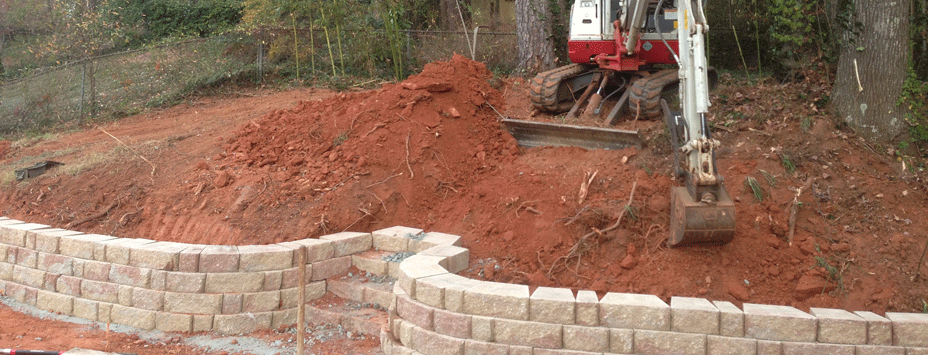Retaining walls are essential structural elements designed to retain or hold back soil, preventing it from eroding or sliding downhill. They are often constructed in areas with sloping terrains, landscaping projects, or constructions on uneven ground. The construction process involves two critical phases: excavation and wall construction. This article delves into various retaining wall types and the best excavation techniques best suited for each.
1. Gravity Retaining Walls
Wall Construction:
Gravity retaining walls rely on their weight to resist the lateral forces exerted by the retained soil. Typically constructed from concrete, stone, or other heavyweight materials, these walls are thick at the base, gradually tapering towards the top.
Excavation Technique:
Given the massiveness of gravity walls, excavation requires a large landscaping footprint. A stepped excavation is often adopted, allowing for the thicker base and the tapered top. The excavated soil can be reused as backfill or for other site needs.
2. Cantilevered Retaining Walls
Wall Construction:
These walls have a thin stem and are constructed of reinforced concrete. They consist of a base slab (often in the form of a T-shape) anchored into the ground. The weight of the retained soil helps in stabilizing the wall.
Excavation Technique:
A simple rectangular excavation is typically sufficient for cantilevered walls, ensuring the base’s depth and width requirements are met. Adequate provisions should be made for installing the reinforcing bars and pouring concrete.
3. Sheet Piling Retaining Walls
Wall Construction:
Used mainly in soft soils and tight spaces, sheet piling walls are made of steel, vinyl, or wood planks, driven into the ground. They are best suited for temporary structures or when the wall height isn’t excessive.
Excavation Technique:
Given the slender nature of sheet pilings, minimal excavation is required. The process involves creating a narrow trench to accommodate the sheet pilings. In more rigid soils, a pre-drilling or pre-trenching method might be employed.
4. Anchored Retaining Walls
Wall Construction:
These walls employ anchors driven deep behind the wall face, connected through cables or rods to provide added strength. They are commonly used when the wall cannot be made thick enough to resist the soil pressure.
Excavation Technique:
The excavation method is twofold. First, a trench is created for the wall’s base. Subsequently, drilling or driving anchors into the ground behind the wall is done. The depth and angle of the anchors’ insertion depend on the wall’s design and the soil’s properties.
5. Gabion Retaining Walls
Wall Construction:
Gabions are essentially stone-filled mesh cages or boxes. When stacked, they form a flexible, permeable, and monolithic structure. Their rustic appearance often enhances landscape designs.
Excavation Technique:
Given that gabion walls are flexible and can adjust to minor settlements, excavation is relatively straightforward. A trench deep enough to accommodate the bottom-most gabion layer is excavated, ensuring a stable foundation.
6. Mechanically Stabilized Earth (MSE) Walls
Wall Construction:
MSE walls comprise alternating layers of compacted backfill and reinforcement, with a facing made of modular blocks, panels, or geocells. The reinforcements, usually made of geogrids or geotextiles, improve the wall’s stability.
Excavation Technique:
Sequential excavation is adopted for MSE walls. As each layer of backfill is compacted, the subsequent reinforcement layer is installed, and the process is repeated upwards.
Excavation Tips:
Regardless of the wall type, some general excavation practices apply:
Safety First: Always ensure that the excavation site is safe, using appropriate shoring or benching techniques if necessary.
Utility Check: Before starting the excavation, locate and mark utilities to prevent accidental damage.
Water Management: Groundwater or rain can make excavation challenging. Employ pumps or drainage methods to keep the site dry.
Soil Analysis: A proper understanding of the soil type and its properties helps in selecting the appropriate excavation technique and wall design.
In conclusion, the choice of retaining wall and its excavation method largely depends on the site conditions, soil properties, and the wall’s intended purpose. By pairing the right wall type with the optimal excavation technique, one can ensure structural integrity while optimizing resources and time.
for the best Excavation and retaining wall construction in Kelowna Contact
OCI Landscaping and Irrigation
928 Arbor View Dr,
Kelowna, BC V1W 5B5
Phone (778) 760-0323

